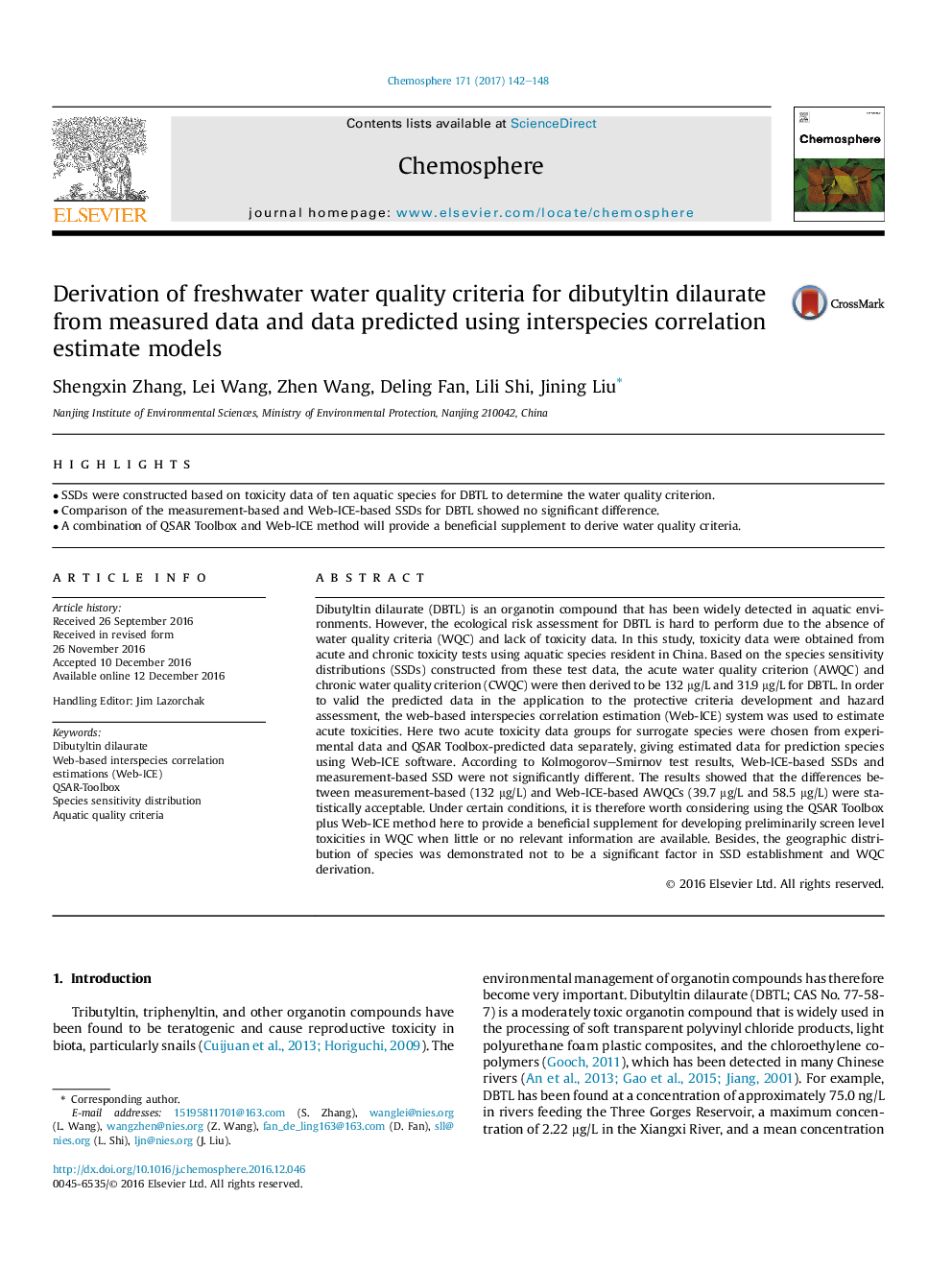| کد مقاله | کد نشریه | سال انتشار | مقاله انگلیسی | نسخه تمام متن |
|---|---|---|---|---|
| 5746356 | 1618800 | 2017 | 7 صفحه PDF | دانلود رایگان |

- SSDs were constructed based on toxicity data of ten aquatic species for DBTL to determine the water quality criterion.
- Comparison of the measurement-based and Web-ICE-based SSDs for DBTL showed no significant difference.
- A combination of QSAR Toolbox and Web-ICE method will provide a beneficial supplement to derive water quality criteria.
Dibutyltin dilaurate (DBTL) is an organotin compound that has been widely detected in aquatic environments. However, the ecological risk assessment for DBTL is hard to perform due to the absence of water quality criteria (WQC) and lack of toxicity data. In this study, toxicity data were obtained from acute and chronic toxicity tests using aquatic species resident in China. Based on the species sensitivity distributions (SSDs) constructed from these test data, the acute water quality criterion (AWQC) and chronic water quality criterion (CWQC) were then derived to be 132 μg/L and 31.9 μg/L for DBTL. In order to valid the predicted data in the application to the protective criteria development and hazard assessment, the web-based interspecies correlation estimation (Web-ICE) system was used to estimate acute toxicities. Here two acute toxicity data groups for surrogate species were chosen from experimental data and QSAR Toolbox-predicted data separately, giving estimated data for prediction species using Web-ICE software. According to Kolmogorov-Smirnov test results, Web-ICE-based SSDs and measurement-based SSD were not significantly different. The results showed that the differences between measurement-based (132 μg/L) and Web-ICE-based AWQCs (39.7 μg/L and 58.5 μg/L) were statistically acceptable. Under certain conditions, it is therefore worth considering using the QSAR Toolbox plus Web-ICE method here to provide a beneficial supplement for developing preliminarily screen level toxicities in WQC when little or no relevant information are available. Besides, the geographic distribution of species was demonstrated not to be a significant factor in SSD establishment and WQC derivation.
Journal: Chemosphere - Volume 171, March 2017, Pages 142-148